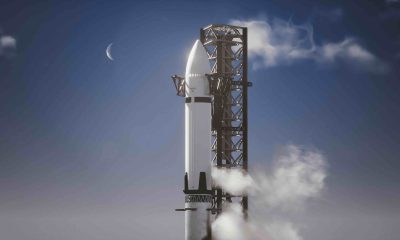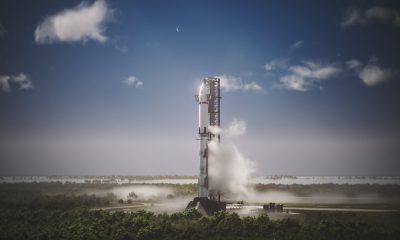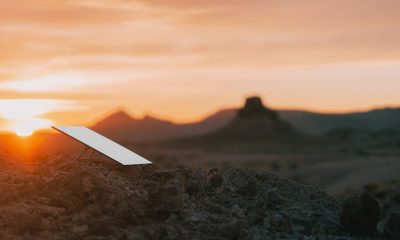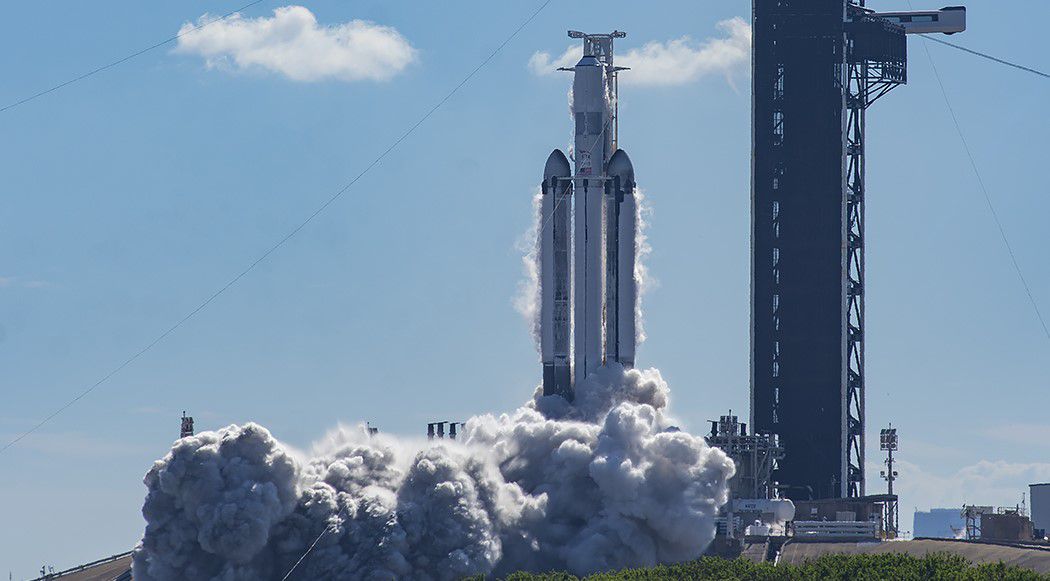
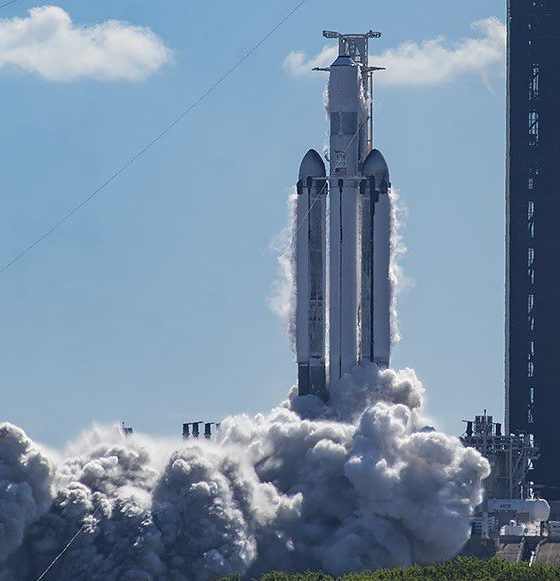
News
SpaceX’s fifth Falcon Heavy launch on track for Sunday liftoff
Update: SpaceX’s fifth Falcon Heavy launch is on track to launch as early as 5:56 pm EST (22:56 UTC), Sunday, January 15th. Tune in below around 5:40 pm EST (22:40 UTC) to watch the potentially spectacular launch live.
If Falcon Heavy does launch shortly after sunset, it could put on a spectacular show, lighting up the twilight skies for hundreds of miles up and down the East Coast.
The fifth Falcon Heavy rolled out of SpaceX’s Kennedy Space Center Pad 39A integration hangar on January 9th and went vertical early on January 10th. 12 hours later, it was loaded with ~1500 tons (~3.3 million lbs) of liquid oxygen and kerosene propellant and ignited for about eight seconds. SpaceX uses static fire tests more liberally than most other launch providers to try to ensure that all systems – propulsion included – are cooperating before liftoff.
The update that's rolling out to the fleet makes full use of the front and rear steering travel to minimize turning circle. In this case a reduction of 1.6 feet just over the air— Wes (@wmorrill3) April 16, 2024
At full throttle, Falcon Heavy Block 5’s 27 Merlin 1D engines – nine per Falcon 9-derived booster – can produce 2326 tons (5.13 million lbf) of thrust at sea level, making it the most powerful privately-developed rocket in history. In terms of performance, Falcon Heavy is the fifth most capable rocket ever built and is second only to NASA’s Space Launch System (SLS) today. While the records of N1, Saturn V, and Energia still stand, all three were retired decades ago.
As is the norm for a rocket with as little experience as Falcon Heavy, SpaceX conducted the static fire test without the USSF-67 payload installed. Like USSF-44, a virtually identical Falcon Heavy launch with similar payloads that launched on November 1st, 2022, SpaceX needs to roll the USSF-67 rocket back to the hangar for fairing installation. During USSF-44, SpaceX took approximately 110 hours to go from static fire to liftoff.
USSF-67’s static fire occurred about 100-104 hours before its scheduled liftoff, meaning that SpaceX only needs to be about 5% more efficient to be ready to launch on Saturday, January 14th. Assuming Falcon Heavy returns to the hangar and rolls back to the pad about as quickly as USSF-44, the odds of a Saturday launch are decent.
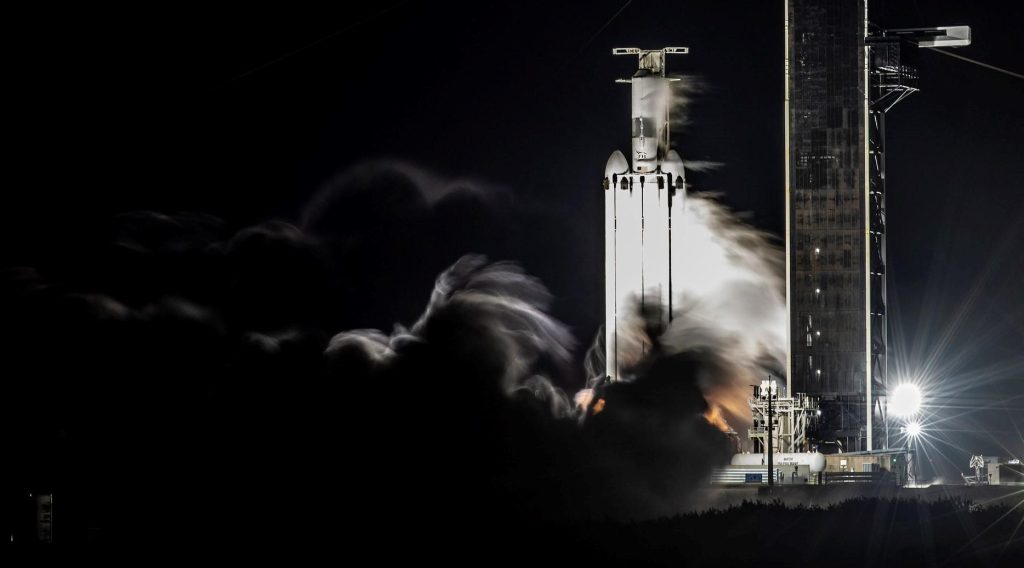
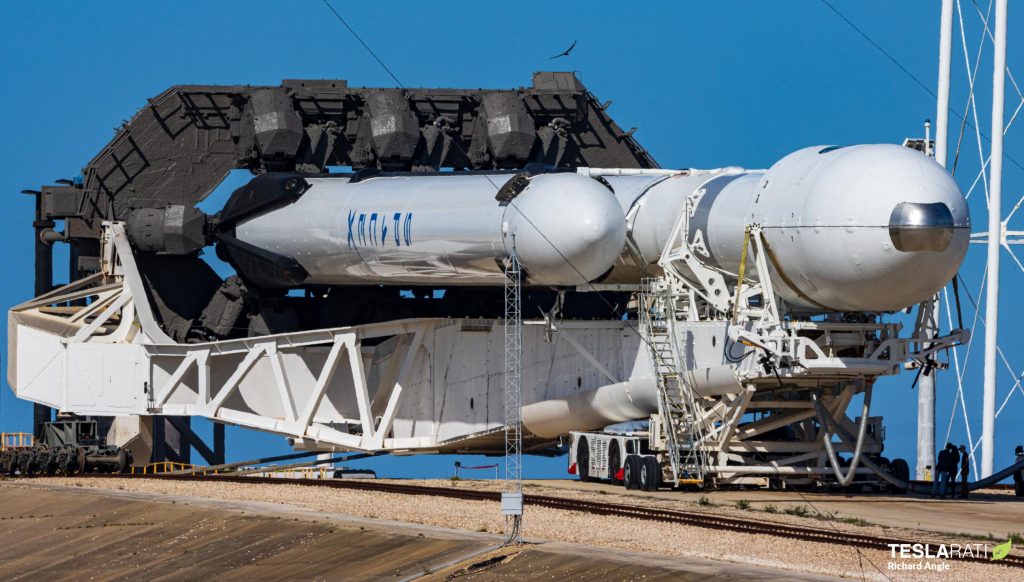
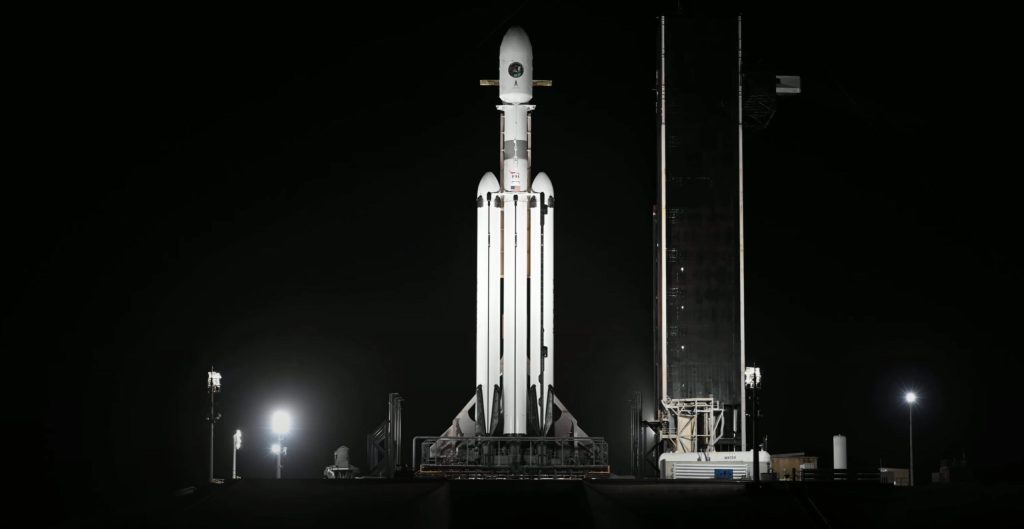
SpaceX’s second direct GEO launch
Like USSF-44, Falcon Heavy will sacrifice one of its three boosters (the center core) to launch USSF-67 directly to a circular geosynchronous orbit ~35,800 kilometers (~22,250 mi) above Earth’s surface. A satellite operating at GSO will never stray from the same region of Earth, making it useful for communications and surveillance. Getting there, however, can be exceptionally difficult.
“To simplify the rocket’s job, most GEO-bound satellites are launched into an elliptical geosynchronous or geostationary transfer orbit (GTO) and use their own propulsion to circularize that ellipse.
On a direct-to-GEO launch, the rocket does almost all of the work. After reaching a parking orbit in Low Earth Orbit (LEO), Falcon Heavy’s upper stage will complete a second burn to reach GTO. Then, while conducting a complex ballet of thermal management and tank pressure maintenance to prevent all of its cryogenic liquid oxygen (LOx) from boiling into gas and its refined kerosene (RP-1) from freezing into an unusable slush, the upper stage must coast ‘uphill’ for around five or six hours.
During that journey from 300 kilometers to 35,800 kilometers, the upper stage must also survive passes through both of Earth’s Van Allen radiation belts. At apogee, Falcon S2 must reignite its Merlin Vacuum engine for a minute or two to reach a circular GSO. Payload deployment follows soon after and could last anywhere from a few minutes to hours. Finally, to be a dutiful space tenant, Falcon’s upper stage must complete at least one more burn to reach a graveyard orbit a few hundred kilometers above GEO.”
Teslarati.com – November 1st, 2023
The USSF-67 payload is mostly a mystery. Like USSF-44, it will carry a Northrop Grumman LDPE (Long Duration Propulsive EELV) with several unspecified rideshare payloads. LPDE is a transfer vehicle capable of deploying small satellites into customized orbits and hosting payloads for months in space.
The US Space Systems Command says [PDF] that “LDPE provides critical data to inform future Space Force programs” and that “the unique experiments and prototype payloads hosted on LDPE-3A [will] advance warfighting capabilities in the areas of on-orbit threat assessment, space hazard detection, and space domain awareness.”
Stay tuned for updates on USSF-67’s launch schedule and SpaceX’s official webcast.
Investor's Corner
Elon Musk’s 2025 pay package gets support from Tesla’s biggest bull
ARK Invest founder Cathie Wood has previously stated that she is quite confident that the vote on Elon Musk’s 2025 Performance Award would pass.
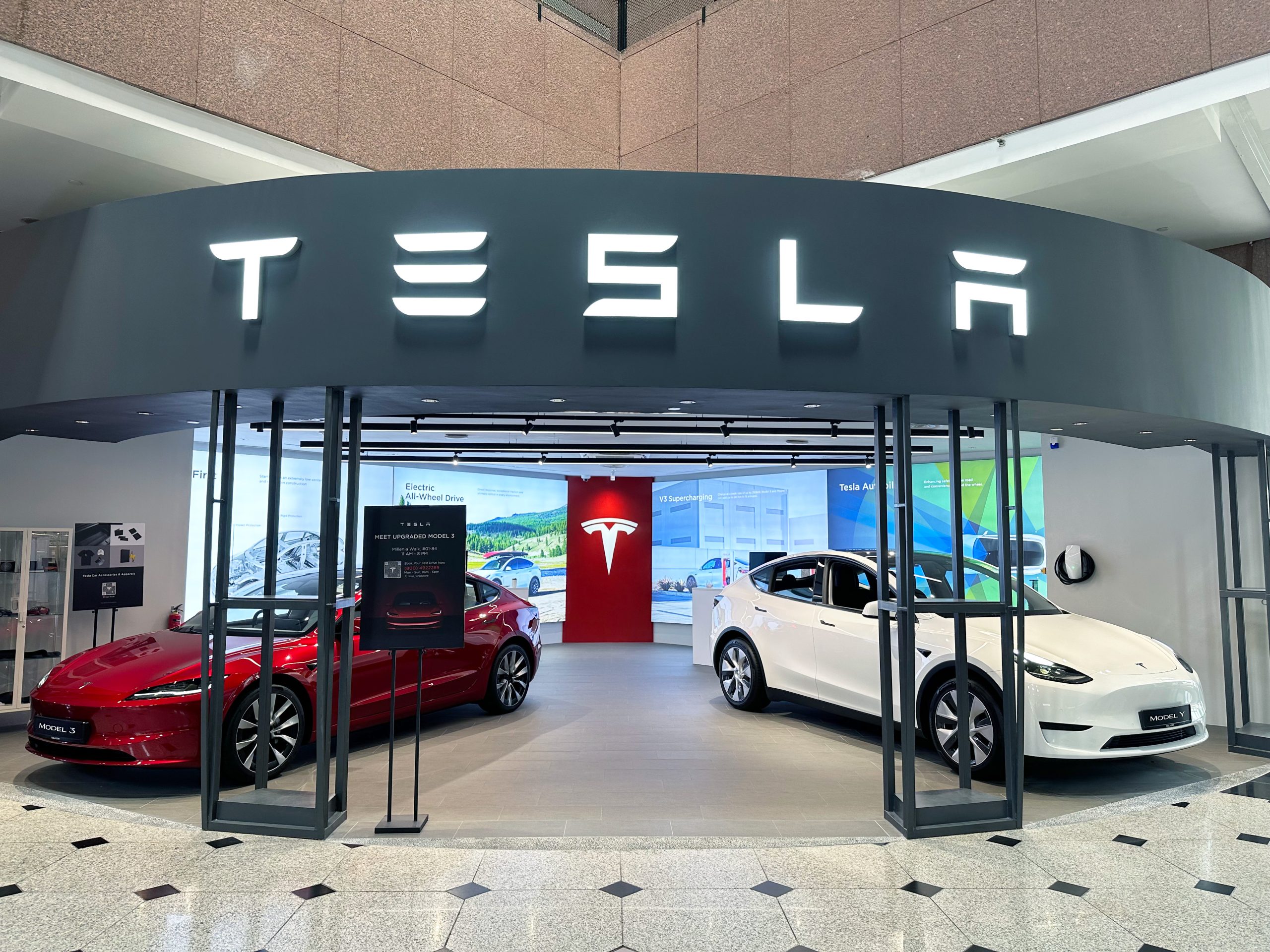
Cathie Wood, CEO of ARK Invest and one of Tesla’s most ardent bulls, reiterated her support for Elon Musk’s 2025 CEO Performance Award.
Wood highlighted that Musk’s leadership attracts incredible talent, and it has allowed the companies he leads such as Tesla to become disruptors in their respective fields.
ARK Invest supports Musk’s leadership
Elon Musk’s 2025 CEO Performance Award has received a mixed reception. Proxy firms such as Glass Lewis and Institutional Shareholder Services (ISS) have stated that they would be voting against Musk’s pay package. Other entities, such as the State Board of Administration of Florida (SBA), have stated that they would be voting in favor of Tesla’s proposals.
ARK Invest founder Cathie Wood, for her part, has previously stated that she is quite confident that the vote on Elon Musk’s 2025 Performance Award would pass. She also stated that a favorable result to the vote for Musk’s 2025 pay plan would be beneficial for Tesla.
“Elon Musk is the most productive human being on earth. And a human being who attracts incredible talent, people who want to solve the world’s hardest problems. This is a win-win for all of us if Elon succeeds this time,” Wood stated. Musk appreciated Wood’s comments, stating, “Thanks Cathie!” In a post on X.
ARK Invest has been one of Tesla’s most loyal bulls
Tesla is ARK Invest’s single largest holding, with the firm holding an estimated $1 billion worth of TSLA, as noted in an Insider report. Wood previously said she expects the approval of Musk’s pay package to trigger “super-exponential growth” for the automaker, as new products like the Cybercab and Optimus expand Tesla’s offerings.
“Because think about it. It is a convergence among three of our major platforms. So, robots, energy storage, AI, and it’s not stopping with Robotaxis. There’s a story beyond that with humanoid robots, and our $2,600 number has nothing for humanoid robots. We just thought it’d be an investment, period,” Wood stated during an appearance at Steven Bartlett’s podcast The Diary Of A CEO.
Investor's Corner
Tesla VP for AI software makes a case for upcoming Elon Musk shareholder vote
Elluswamy reiterated the idea that Tesla is indeed at a critical point in its history.

Tesla’s Director of Autopilot Software and VP of AI Software Ashok Elluswamy has shared his thoughts about CEO Elon Musk’s 2025 performance award. While the executive typically discusses topics related to the company’s tech and AI initiaives, Elluswamy made it a point to make a case for Musk’s proposed pay package.
Tesla’s VP for AI Software shares his insights
In a post on X, Elluswamy reiterated the idea that Tesla is indeed at a critical point in its history. This is because the company is changing from a leader in electric vehicles and a major player in the energy storage market to a powerhouse pioneer in robotics that are powered by real-world AI. As per the executive, Elon Musk’s leadership of Tesla is more relevant now more than ever. He also reported an X article he previously wrote about Elon Musk and Tesla.
“This note regarding the importance of Elon leading Tesla is more relevant now than ever. Tesla is at a critical juncture, as it is metamorphosing into the world leader in robotics. Creating large-scale, useful robots requires expertise across engineering design, manufacturing, real-world AI software, chips for AI, and more. Elon is, quite likely, the only person on Earth with deep skills and the right instincts across all these domains,” Elluswamy stated.
A push to support Musk’s 2025 performance award
In recent weeks, Tesla executives such as Board Chair Robyn Denholm have been encouraging TSLA shareholders to vote in favor of Elon Musk’s 2025 performance award, as well as other proposals that the company’s directors have argued are critical to the future of the company. These proposals, Tesla executives noted, are necessary to ensure that the company can achieve the ambitious targets of Elon Musk’s Master Plan Part IV.
Elon Musk’s pay package, as well as the company’s proposals, would be decided at the upcoming 2025 Annual Shareholders Meeting, which would be held at Giga Texas on November 6, 2025. Needless to say, Tesla’s future might very well be decided during the event.
Elon Musk
Tesla Cybercab steering wheel dilemma gets final answer from Elon Musk
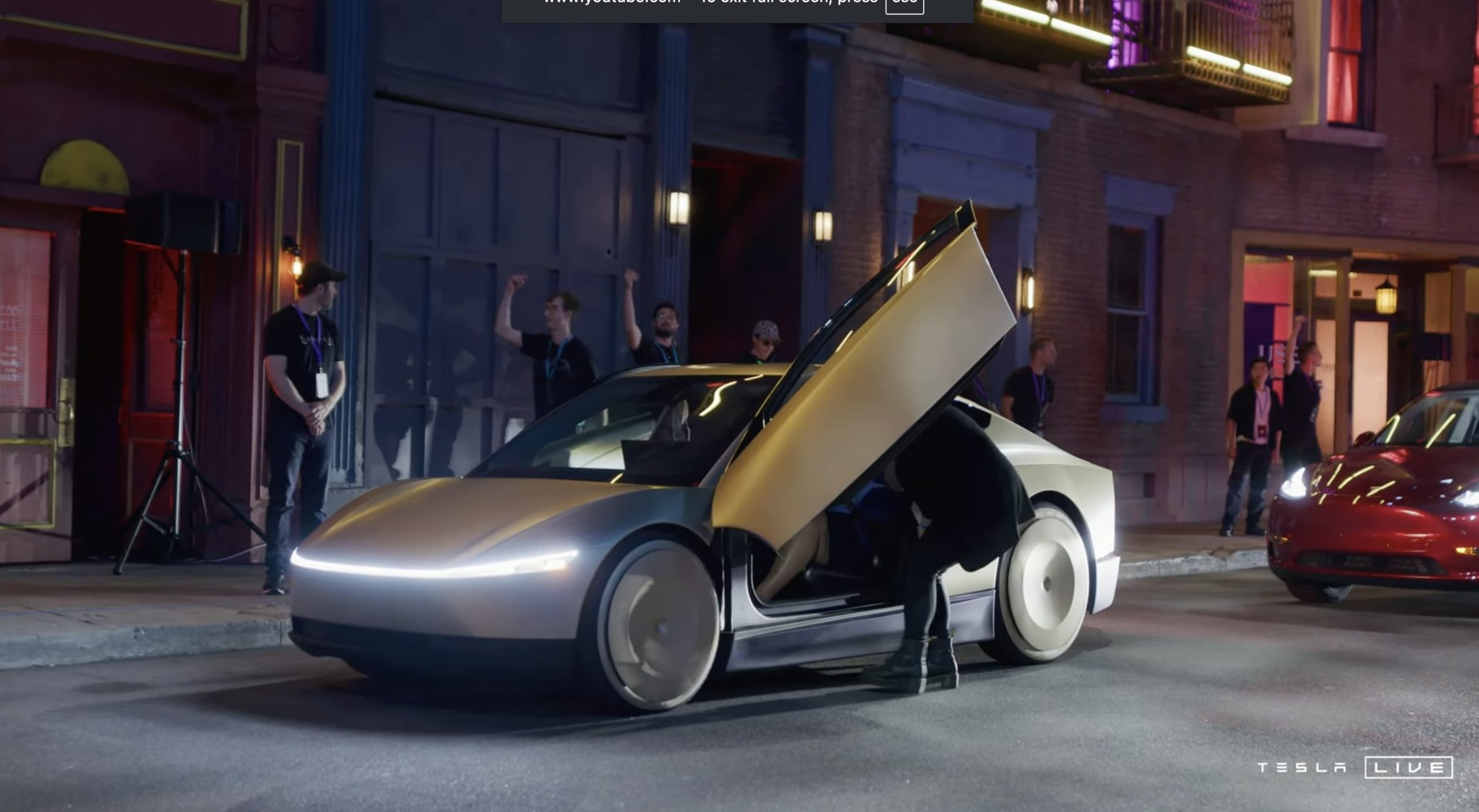
Tesla Cybercab is the company’s autonomy-geared automobile that will eventually begin the phase-out of human drivers. In recent days, however, there has been speculation regarding the vehicle’s equipment and whether it would be fitted with a typical steering wheel and pedals.
CEO Elon Musk put an end to this discussion, at least for now, as he maintains the vehicle will not have anything that would remotely resemble any possibility of any sort of manual operation.
The problem is, there is a flaw in his logic, and his justification for the reasoning is an opinion. But Musk has a special ability; he has the final say on what goes on at Tesla, and if he does or doesn’t want manual controls in the new vehicle, he’ll get his way.
On the All In Podcast on Friday, Musk gave his final answer to whether the Cybercab would have a steering wheel or pedals by stating it would not when the production units start rolling off lines in Q2 2026.
He provided a further explanation:
“The reality is, people may think they want to drive their car, but the reality is that they don’t. How many times have you been in an Uber or Lyft and said ‘I wish I could take over for the driver, get off my phone, and drive to my destination? 0.0 times.”
🚨 Elon Musk says Tesla will NOT put a steering wheel in the Cybercab (via All In Podcast):
“The reality is, people may think they want to drive their car, but the reality is that they don’t. How many times have you been in an Uber or Lyft and said ‘I wish I could take over for… pic.twitter.com/SGu3to5anA
— TESLARATI (@Teslarati) October 31, 2025
Although the units that have been spotted on public roads in recent days are equipped with a steering wheel and pedals, it is because Tesla is testing the vehicle in real-world situations, and manual controls are required for it.
Tesla Cybercab spotted testing on public roads for the first time
Some Tesla fans in the community have said that the car seems more geared toward being suitable for manual operation as opposed to a fully autonomous vehicle primed for driverless ride-hailing.
Earlier this week, Tesla Board Chair Robyn Denholm said that if the company had to put a steering wheel or pedals into the Cybercab, it would.
-
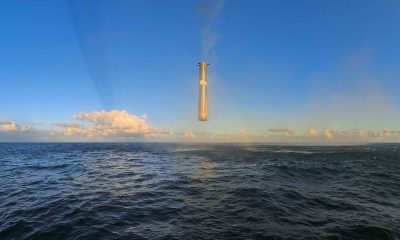
 Elon Musk2 weeks ago
Elon Musk2 weeks agoSpaceX posts Starship booster feat that’s so nutty, it doesn’t even look real
-

 Elon Musk2 weeks ago
Elon Musk2 weeks agoTesla Full Self-Driving gets an offer to be insured for ‘almost free’
-
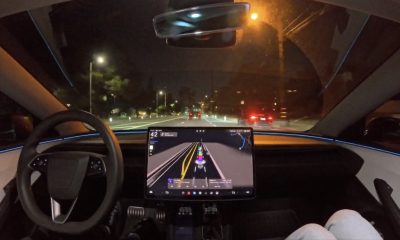
 News2 weeks ago
News2 weeks agoElon Musk confirms Tesla FSD V14.2 will see widespread rollout
-
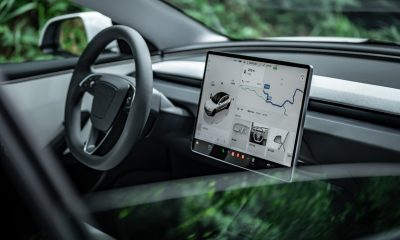
 News2 weeks ago
News2 weeks agoTesla is adding an interesting feature to its centerscreen in a coming update
-
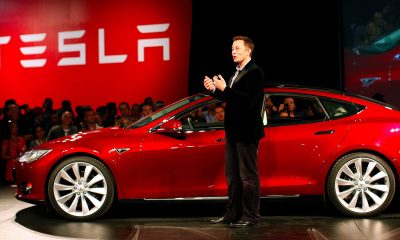
 Elon Musk2 weeks ago
Elon Musk2 weeks agoTesla CEO Elon Musk’s $1 trillion pay package hits first adversity from proxy firm
-
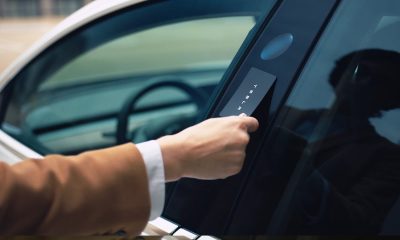
 News2 weeks ago
News2 weeks agoTesla might be doing away with a long-included feature with its vehicles
-
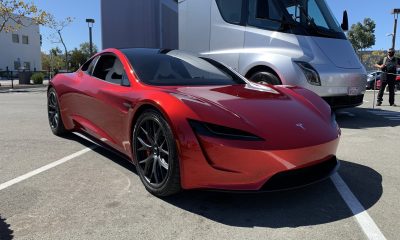
 News2 weeks ago
News2 weeks agoTesla updates fans on its plans for the Roadster
-
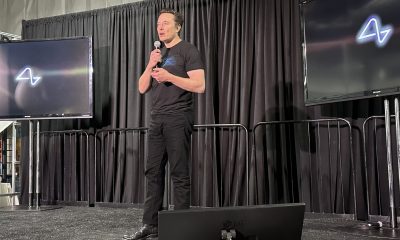
 Elon Musk2 weeks ago
Elon Musk2 weeks agoAfter moving Tesla to Texas, Elon Musk is back in the Bay Area with Neuralink expansion


